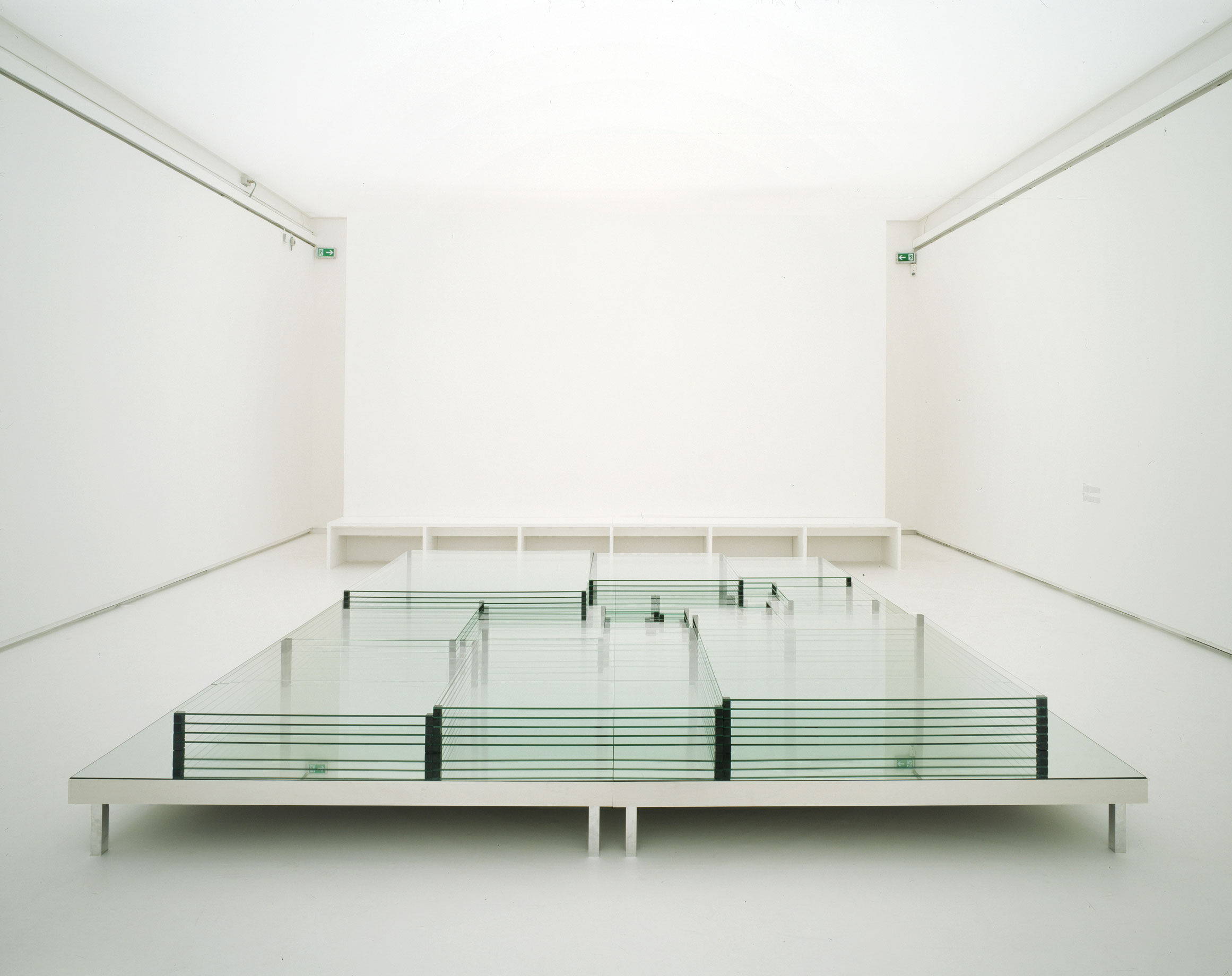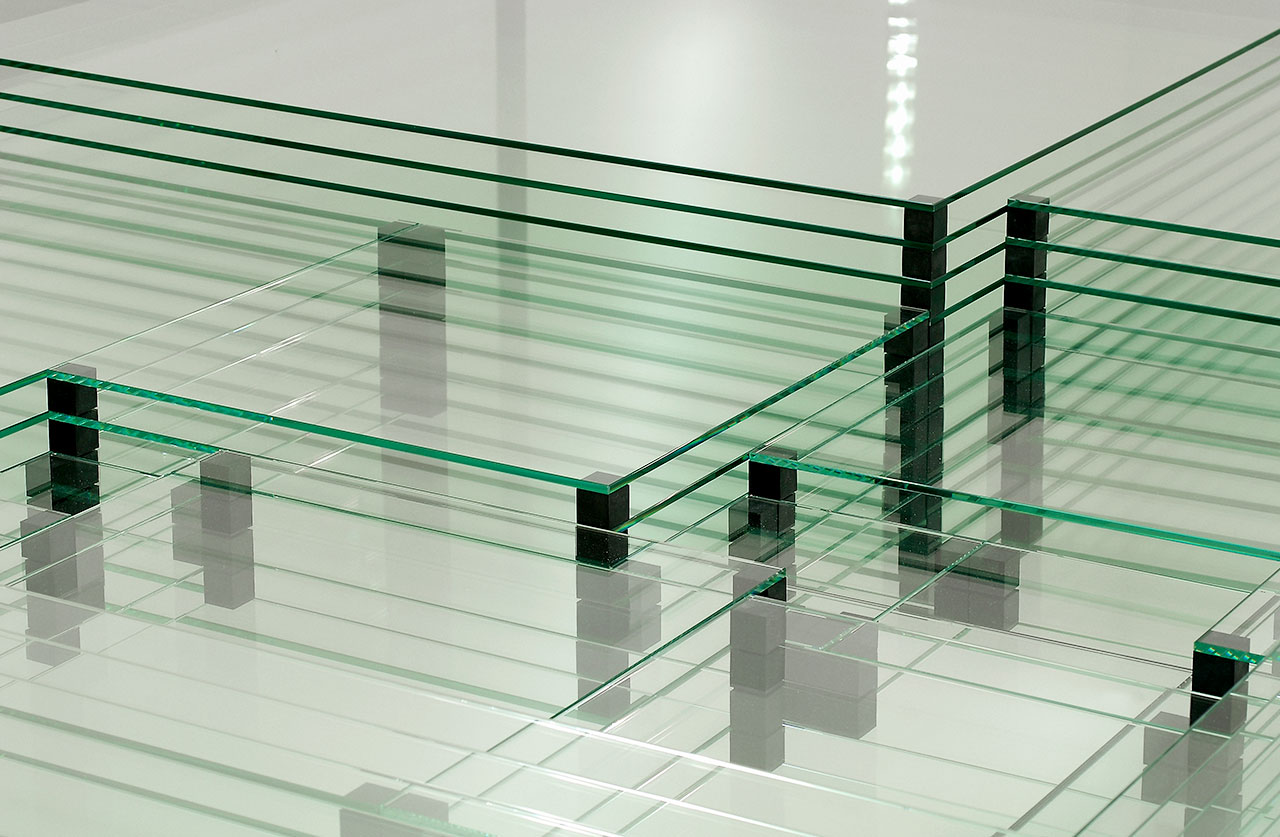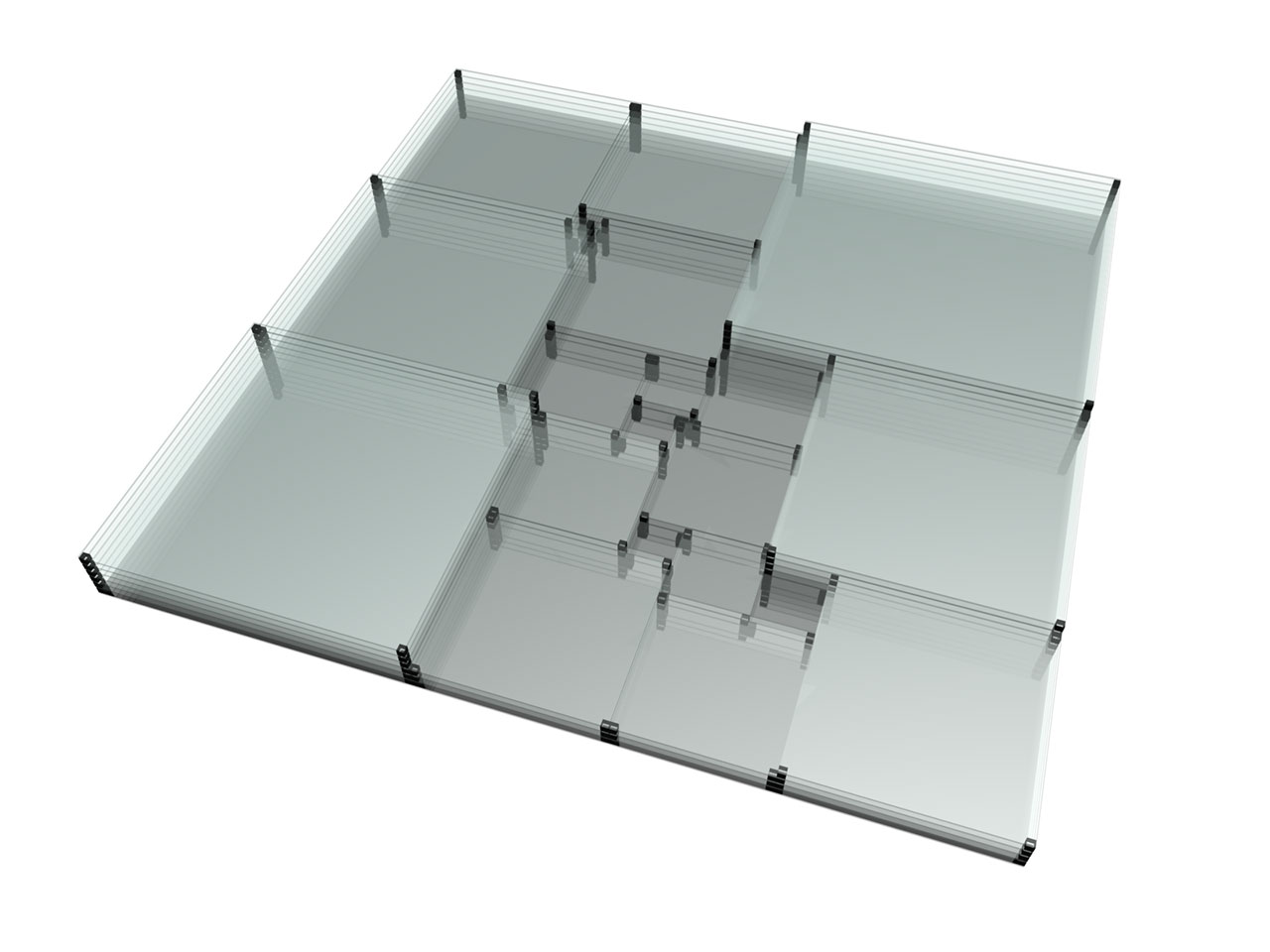perfect square consists of an accumulation of glass sheets of various sizes which form a complex visual composition through the concept of layering. The division of the base follows the mathematical principle of the perfect square that divides a square in several smaller squares without repeating any one size. The smallest possible number of squares is 21. The Russian mathematician A.J.W. Duijvestijn discovered the principle of the perfect square in 1978.
The work perfect square is expanding this principle to a three-dimensional form in which multiple layers of glass are arranged beside and on top of each other, resembling permanent storage media, and complexity and reflection take precedence as in a thought model.


